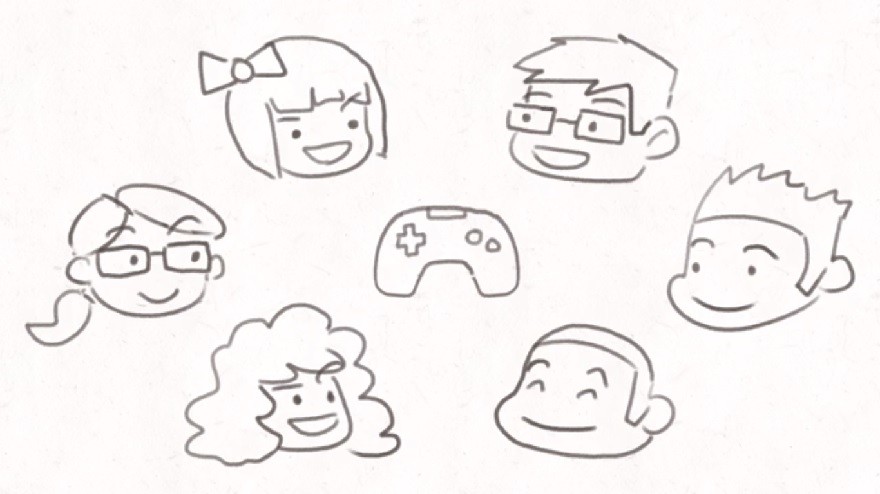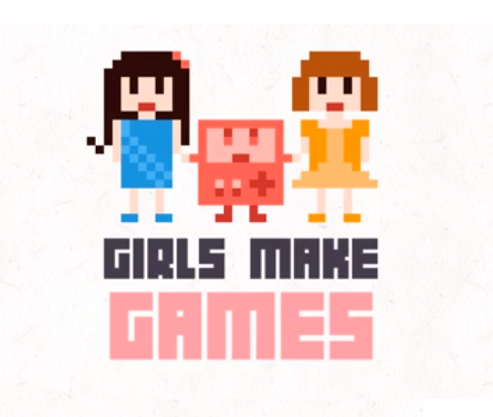To Laila Shabir, Girls Make Games is a positive answer to an industry-wide problem.
It was while working with her team at Learn District to hire two new employees that the founder and CEO discovered a disturbing problem: although Laila wanted to recruit a fellow woman to join the team, female game programmers were nearly impossible to find.
Frustrated, she took to Twitter to voice her concerns. “I literally just tweeted ‘how can we get more girls interested in programming for games?’” she recalls. “My second or third tweet was something like ‘maybe we should start a summer camp or something for younger girls.’”
The idea garnered a massive positive response, with emails coming in from all over the world asking how people could help support the cause.

A few months later, the first official Girls Make Games camp took place in June 2014 in the Bay Area. Spanning three weeks, the event brought several pre-teen and teenaged girls in, taught them the basics of programming, took them on field trips to major tech and game companies, and allowed them to collaborate with artists and composers to create their very own game projects.
This was the first time the Learn District team had ever done something like this, and they were stunned at how quickly the girls picked up on the information without any prior development experience. They even had one team working in Unity.“I remember thinking ‘oh my God, they want more,’” she laughs. “’We have to make it harder!’ You think you know how they think because it’s like, ‘Oh, they’re kids, their minds are really simple, right?’ But they’re not.”

As the girls continued to learn the basics of programming, Laila found that they began to experience the empowering feeling of unbound creativity. She remembers one girl in particular who was initially very shy and hardly ever spoke with anyone else. At the end of the camp, she was dancing on camera. “The transformative moment for her was when she was the first in the class to get her sprite to shoot,” she says. “After she figured it out, she would not stop. She had questions. She wanted to do stuff, and she wanted to make her own game. It was really great.”
Since the girls were all new to game design, Laila recalls learning a lot from their method of approaching the task from a completely unique angle. Rather than adhering to conventional genres and limiting themselves to pre-set ideas, the girls instead decided to approach their game creation as a way to simulate real life. “I think my game design experience and thinking has revolved around the games I have played,” she says. “Because I’m so defined by genres in my head, I always go ‘Oh, what genre is it going to be?’ That’s always my first question, and it shouldn’t be. The first question should be what’s the experience going to be?’ That shift in my own mind was really big during the camp.”
That shift first happened while talking to the girls designing Fluffle’s Bubbles, a minimalist game in which players pop the bubbles breathed out by a dragon. Rather than attempting to emulate it from a game that came before, the girls were instead inspired by their love of popping bubble wrap and wanted to integrate it into a game. “That’s how the game came to be,” she laughs. “It went from a real-life experience into an interactive experience. I was just like, ‘Wow, that’s awesome. I want to do that.’”
No matter what the game’s subject was, each team had also constructed a detailed backstory for their main characters. In the case of Fluffle’s Bubbles, the dragon had ingested soap at a young age, and therefore breathed bubbles instead of fire. The Hole Story is another game created by a group of girls starring a curious archaeologist named Wendy who stumbles into a fantasy world after digging in her backyard. “I asked them [each of the teams] why they had such detailed backstories, and they said it’s because it helped them to understand the character’s motivations [and] what the game’s mechanics would be.”
She explains that the girls did this all of their own accord. “With these girls, I never had to make them think ‘what’s the character going to be like?’ They always had a spreadsheet of ideas.”

To her, this is a crucial part of compelling game design. “For the most part when you play a game, you see only one perspective. And, if you had the chance to learn about the character, that makes your experience so much richer.”
Each team took these ideas and put together a formal pitch to present on Demo Day to a panel of judges from Double Fine, USC, and Google Play in the hopes of being selected the winner that would receive crowdfunding for their game and make it available on the Google Play store. The winner was the aforementioned The Hole Story, which is currently running an already-successful Kickstarter campaign.

With several planned events scheduled to take place in cities both in the United States and around the world, Laila is optimistic that the organization will only continue to grow. “I think the next few years are going to define what the organization becomes,” she says, adding that it will likely become its own not-for-profit.
Whatever the future holds for Girls Make Games, the mere fact that even this handful of girls have had the chance to explore their creative abilities and even be part of a successful Kickstarter campaign speaks volumes for how empowering the art of making games can be. In an age when girls too often believe they can’t do anything, learning that they can thanks to the creativity inherent in the interactive medium is a wonderful revelation indeed. The fact that everyone else can learn a lesson from them, too? Even better.
